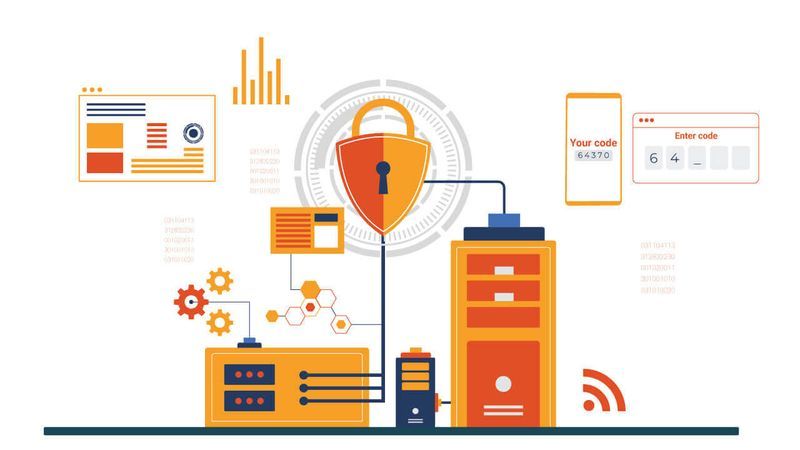The entire human race has undergone a massive transformation since the internet entered our lives. Every global industry hopped on this trend to say hello to limitless scaling and a wider reach. While it’s easy to seem lost in the mind-blowing benefits the digital age offers, it’s vital to acknowledge that more connectivity has become a gateway for increasing cyber-attacks. This is true, especially for sectors that involve keeping and maintaining sensitive personal and financial customer information.
Security Testing: How It Is The Backbone of the Banking Sector

For obvious reasons, the banking sector has always been the primary target for such threats. This forces organizations to gear up and fight against security breaches. The first step is preventing unauthorized access of any form, which brings us to the core parameter, security. Now that banking information is available at your fingertips through mobile apps, it has become easier for hackers and attackers to exploit the loopholes of an application.
But what if organizations strengthen their security to a level that it can eliminate or at least minimize these bottlenecks once and for all? That’s exactly what Security Testing does. It is the pillar on which the banking sector rests, without which it could result in catastrophic consequences. In this post, we’ll look at how security testing is the backbone of the banking sector. But before that, we’ll look at what security testing exactly is and some significant security threats to banking institutions.
What is Security Testing?
Security testing is a software testing category that aims to identify and address security vulnerabilities in an application. The process also helps secure data and determine whether an app is prone to some external attack.
A skilled team of security testers analyzes the application for weak spots such as the absence of a firewall and an unsecured interface. It also helps prevent the loss of crucial data or information.
Major Security Threats To Banking Institutions
It’s no secret that hell will break loose if hackers grasp sensitive customer data, especially when a lot of money is involved. Therefore, knowing the major security threats to banking institutions is essential. Let’s take a look.
1.Insider Attacks
Every institution worries about the threat that is out there. But what about the potential attacks that can come from members of the organization itself? After all, every company has its fair share of disgruntled workers and malicious employees. Besides intentional malice, human errors are a notorious part of insider attacks or threats in the banking sector.
2.DDoS
DDoS attacks make a website or an application available for users either completely or partially. Using a tool that facilities the identification of malicious URLs can establish a robust database as a layer of protection against future DDoS attacks.
3.Web App Attacks
If any banking application doesn’t have an HTTPS protocol, it indicates a lack of security for user data. Regular database check-up and fixing vulnerabilities is the answer to preventing as many hacking attempts as possible.
4.Phishing
Every internet user has come across a well-written and credible-looking email with the sole intention to steal information. Phishing attacks make users believe that they’re logging in an actual form while in reality, it’s fake. Hackers can misuse customer’s login information as soon as they get in.
Security Testing: How It Is The Backbone of the Banking Sector
Even though banks have the best software to strengthen security comma security testing is not optional. This is one of the classic situations, where you shouldn’t believe that your security features are perfect. Security testing makes a lot of room for continuous betterment and innovation. Here is how security testing is the backbone of the banking sector.
1.Protection of Customer Data
Banks have a treasury of information, both financial and personal. There There is no cap on the frequency and nature of criminal activities that can take place with such a massive amount of sensitive data. The information of every single customer comes under the risk radar as soon as a cybercriminal manages to break into a system. Having a security testing team working on the best security testing software is the best way to keep customer data intact.
2.Closing Entry Doors To Monetary Attacks
Just like the herd, hackers are either directly or indirectly after money. The only difference is that they can go to any lengths to extract funds and instigate illicit transfers to get what they want. Transferring money from customers’ accounts to their accounts will be a piece of cake as soon as they get their hands on confidential financial information. Security testing exposes the pain points and areas that lack protection. It also closes entry doors to money-related attacks and prevents loss of funds on a mass scale.
3.Protecting Bank Reputation
Considering how blindly people trust banks, the entire sector needs extra care not to compromise their credibility. If there is a data leak from the bank’s end, its reputation will be at stake, especially, in the current-day scenario where it takes no time for the cat to get out of the bag. Not only can such breaches affect a bank’s business for a few days or months, but they can also lead to a complete shutdown. Software testing for BFSI ensures that a bank’s reputation remains protected, thanks to extra vigilance when it comes to cyber threats.
Summing It Up
One of the best ways to Test Banking Applications is to step into the shoes of a hacker and be one step ahead of them. Another great practice is implementing Banking Domain Application Testing and DLP strategies (Data Loss Prevention). Like every other entity, banks are undergoing massive digital transformation in the current day.
Addressing security bottlenecks isn’t something banks can get over in an instant. In fact, security testing has to be an ongoing process to remain an unbreakable backbone on which the integrity of the entire banking system stands. When banks prioritize security issues, customers can enjoy a secure interface and a safe user experience.







Leave a Comment
You must be logged in to post a comment.